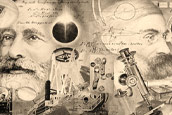ZEISS 20/20 Magazine Pro to Pro Articles


ZEISS SmartLife Young Lenses: A Lens for Digital Natives

What’s New in Stock Single Vision Lens Blanks?

The New Standard in Excellence

The Importance of Being an Optician

Into the 21st Century: ZEISS VISUSTORE Brings Lens Orders into the New Millennium

DriveSafe: See Better When It Matters Most

ZEISS: An Optician's Best Friend

Teaming Lens Science with Lens Fashion

ZEISS PhotoFusion with DuraVision Flash in Trivex – The Ultimate Lens

ZEISS BlueGuard for the Dualism of Blue Light

Celebrating 175 Years in Optics

The Hidden Threat of Indoor UV

SmartLife Lenses for Life in Motion

Free and Clear with ZEISS Wipes and Spray

UV Protection Could Have Given Us More Art From a Master

Make Mine ZEISS: PhotoFusion, DuraVision and a Legacy of Excellence
ZEISS Vision Care. Championing the Independent™












